Designing an indoor-outdoor space
Designing an indoor-outdoor space
Clever ways to make your home feel at one with nature
Linking indoor and outdoor spaces is not a new design concept. John Brookes wrote his seminal book ‘Room Outside’ in the 1960s. That was 60 years ago. And while the range of products has increased exponentially, the role a garden can play hasn’t changed - an extension of our home. In this article we explore different ways to help you create a beautiful and functional indoor-outdoor space that complements your lifestyle.
What do you want a garden for?
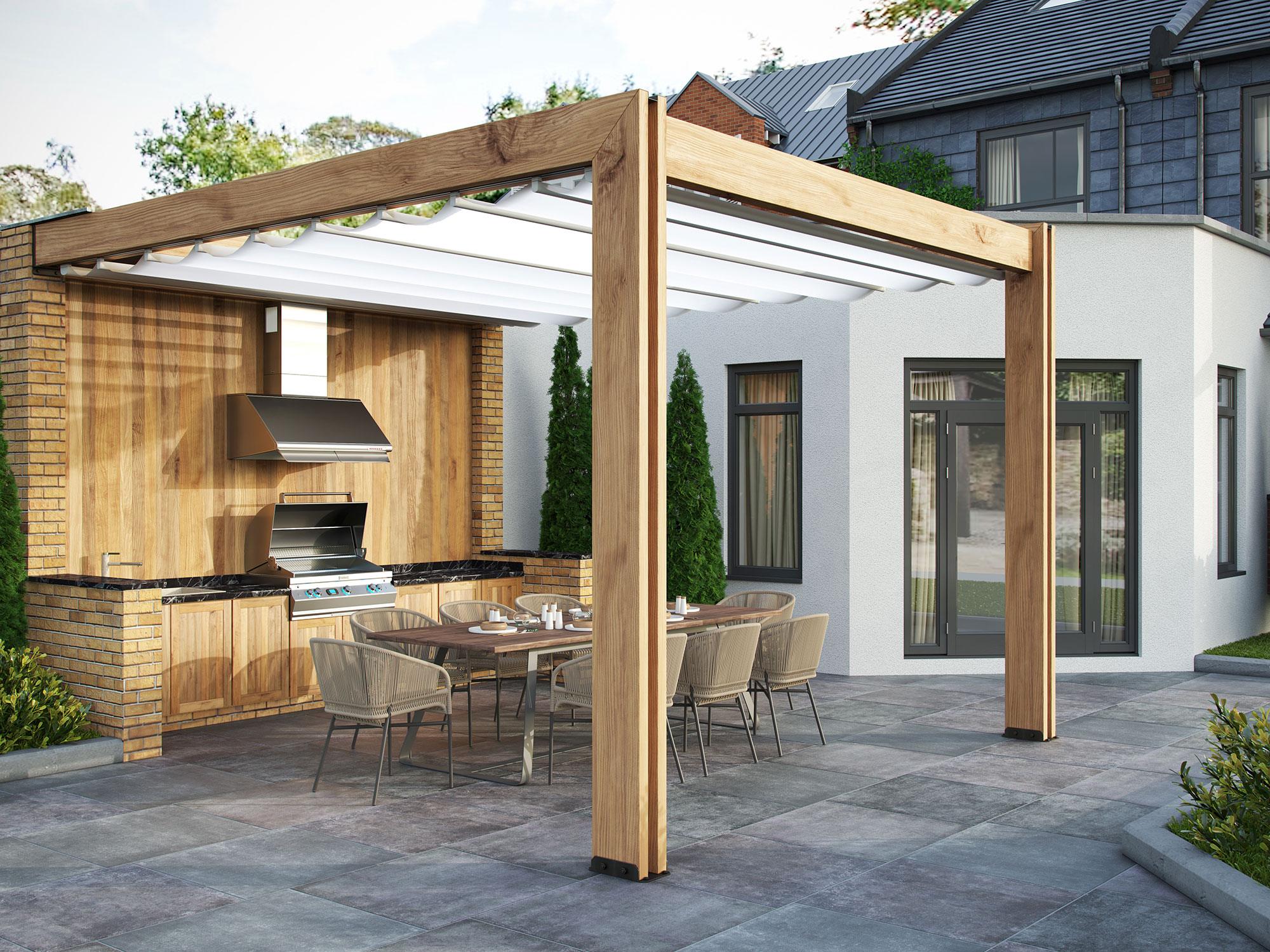 Valverdi Hanna Dark Grey cement effect tile. Image supplied by London Tile Co.
Valverdi Hanna Dark Grey cement effect tile. Image supplied by London Tile Co.
A garden’s purpose should be the starting point for its design rather than aesthetics, according to landscape gardener Liam Curtis, owner of Twynham Garden Projects. He said: “The most important thing is how you want to live in the space, how you plan to use it. If a client wants an entertainment area with an outdoor kitchen or brick pizza oven or BBQ, I start there and build around it. You need a primary focus, and the rest will grow out of it.” According to this functionalist view, form follows function.
Luke Mills, director of Landscape Service, agreed clients today mostly want outside space for entertaining and relaxing, including dining for six to ten people and soft seating. If a kids’ play area is on their wish list, it will be in a separate zone. “We often mirror the interior, especially if it’s an open plan layout,” said the garden designer. Of course, you may prefer to grow flowers.
Consider views of the garden
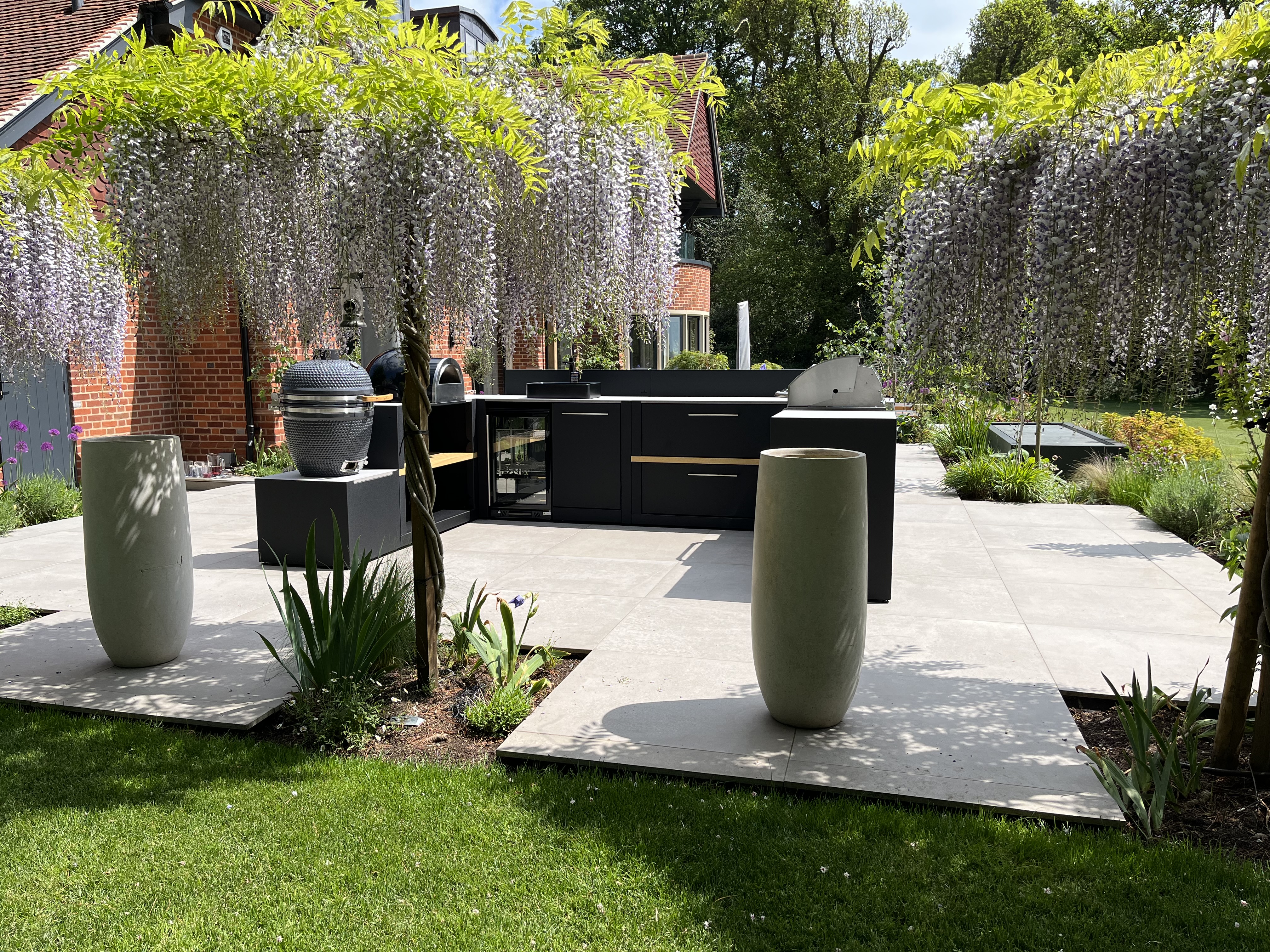 Grillo outdoor kitchen on patio framed by Wisteria trees. Image supplied by Grillo
Grillo outdoor kitchen on patio framed by Wisteria trees. Image supplied by Grillo
Consider hiring a garden designer. It’s all too easy to ignore the garden when designing a home extension or remodelling your living area. In the past, houses afforded partial views of outdoor spaces through a few windows, said Mills. Today, a popular choice is to open-up the back of a property with contemporary bifold or sliding doors. Swatches of glazing ensure a visual connection to the garden, patio or distant view. When bifold doors are pulled back, there is no physical barrier between the inside and out.
A large bay window overlooking a lush, green garden can be just as immersive. Plus, it can provide a cosy reading nook.
“Some people get near the end of a project and have a wall of glass installed and realise they need to address the garden but have run out of money. What is the point of having a panoramic view and looking out on something horrible,” said Mills.
Mirror the flooring
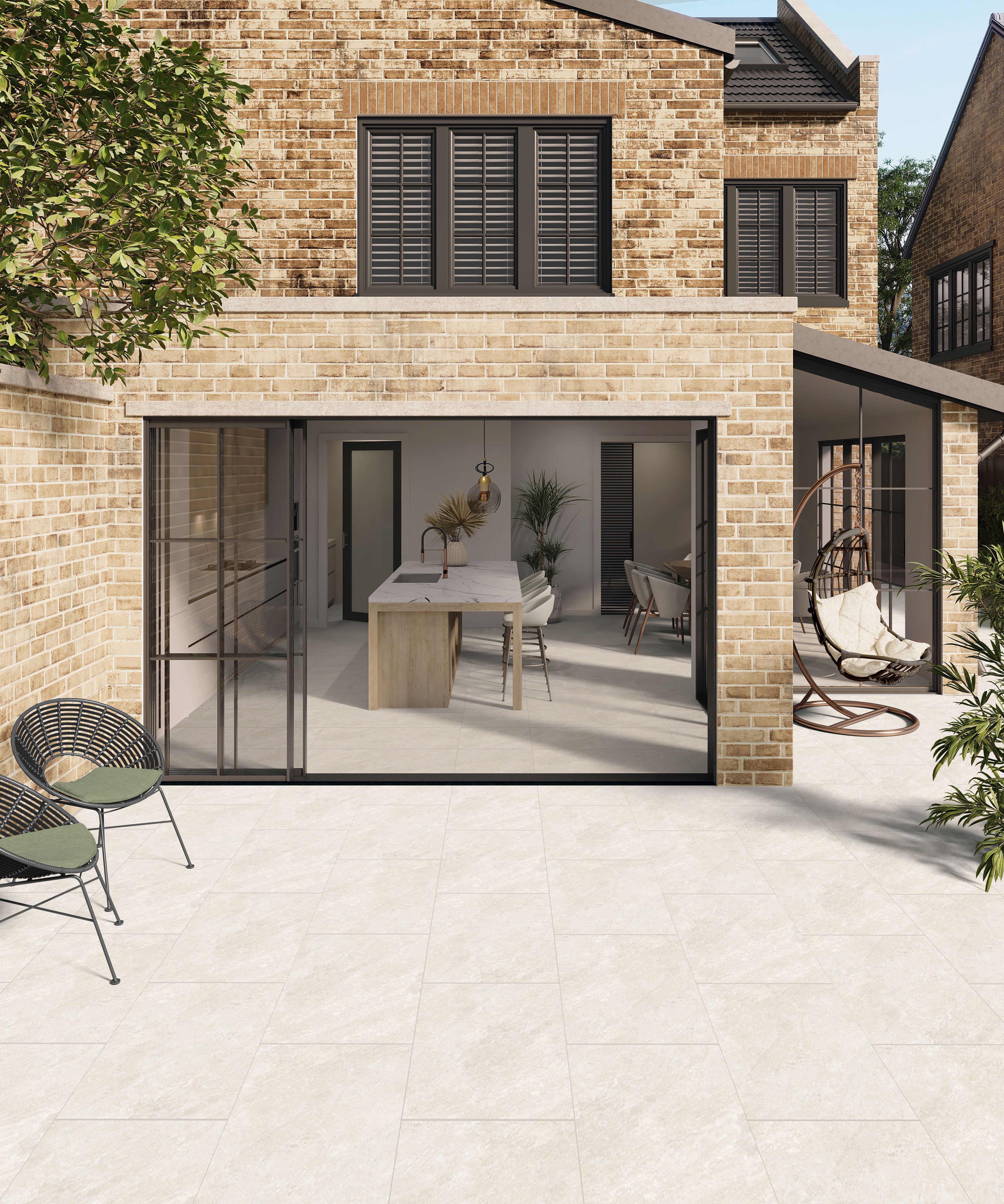 Valverdi Quart Stone warm white porcelain paving outdoor tile. Image supplied by London Tile Co.
Valverdi Quart Stone warm white porcelain paving outdoor tile. Image supplied by London Tile Co.
Matching flooring creates a seamless transition between inside and outdoors. “We try to match the inside and outside materials as closely as possible to visually connect the spaces,” said Mills. “Even things like grouting should match. It’s the little details that really create a connection between the spaces.”
Be aware the tiles must be suitable for both inside and outside use. They need to be frost-proof and have extra slip resistance, so they don’t become a hazard when wet. The colour is important, too. “We try to talk clients out of bright white tiles because they can bounce light outside and you end up squinting.” Sometimes it might be better to go for a light grey or beige, said Mills.
If you want a low maintenance outside space, porcelain paving tiles that mimic natural stone are better than the real thing that require pressure washing every year, he said. “As a man-made material, porcelain is a completely sealed tile and won’t absorb water whereas natural stone does absorb water and goes green with algae.”
Level the thresholds
Consider installing a level threshold between inside and outside spaces. Avoid steps if possible. Not only does it provide a safer stepover for the young and elderly but blurs the boundaries between inside and out, especially paired with bi-fold or sliding doors. Mills said: “A level threshold makes it easier for people walking outside with food and drinks glasses when they don’t have to think about steps. Obviously, it needs to work with the architecture, and you can’t go below the damp proof course.” The patio should also drain away from the house.
Lighting & electrics
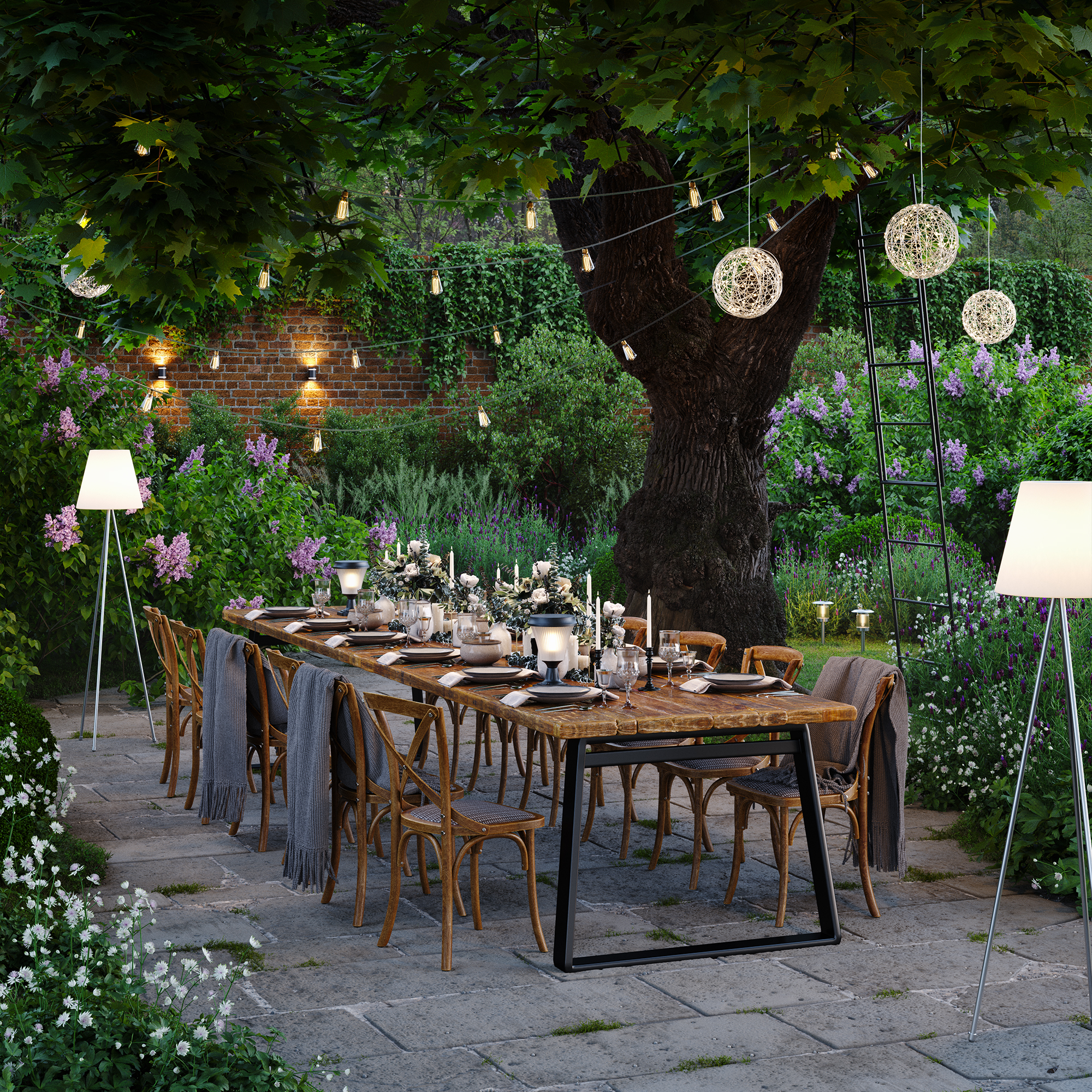 Garden Hero. Image supplied by Solar Centre
Garden Hero. Image supplied by Solar Centre
Extend the usability of your indoor-outdoor space into the evening by incorporating lighting. There’s a whole range of garden lighting, including spike lights or uplighters stabbed into the ground and globe hanging lanterns. Another option is recessed LED lights that shine a beam across a path, patio or wall. “Sometimes it’s done for safety reasons, so people can navigate the garden in the dark,” said Curtis. Lighting focal points in the garden that can be seen from the house, such as an ornamental tree or architectural feature, adds an element of visual interest at night. For example, a simple string of solar fairy lights on a trellis can look festive.
“People want plug sockets everywhere now,” said Curtis. “I think that is so they can take their laptops outside or have a television or film projector. People are really thinking about bringing their lives outside and not being forced inside. I think’s it’s brilliant.”
Multi-functional design
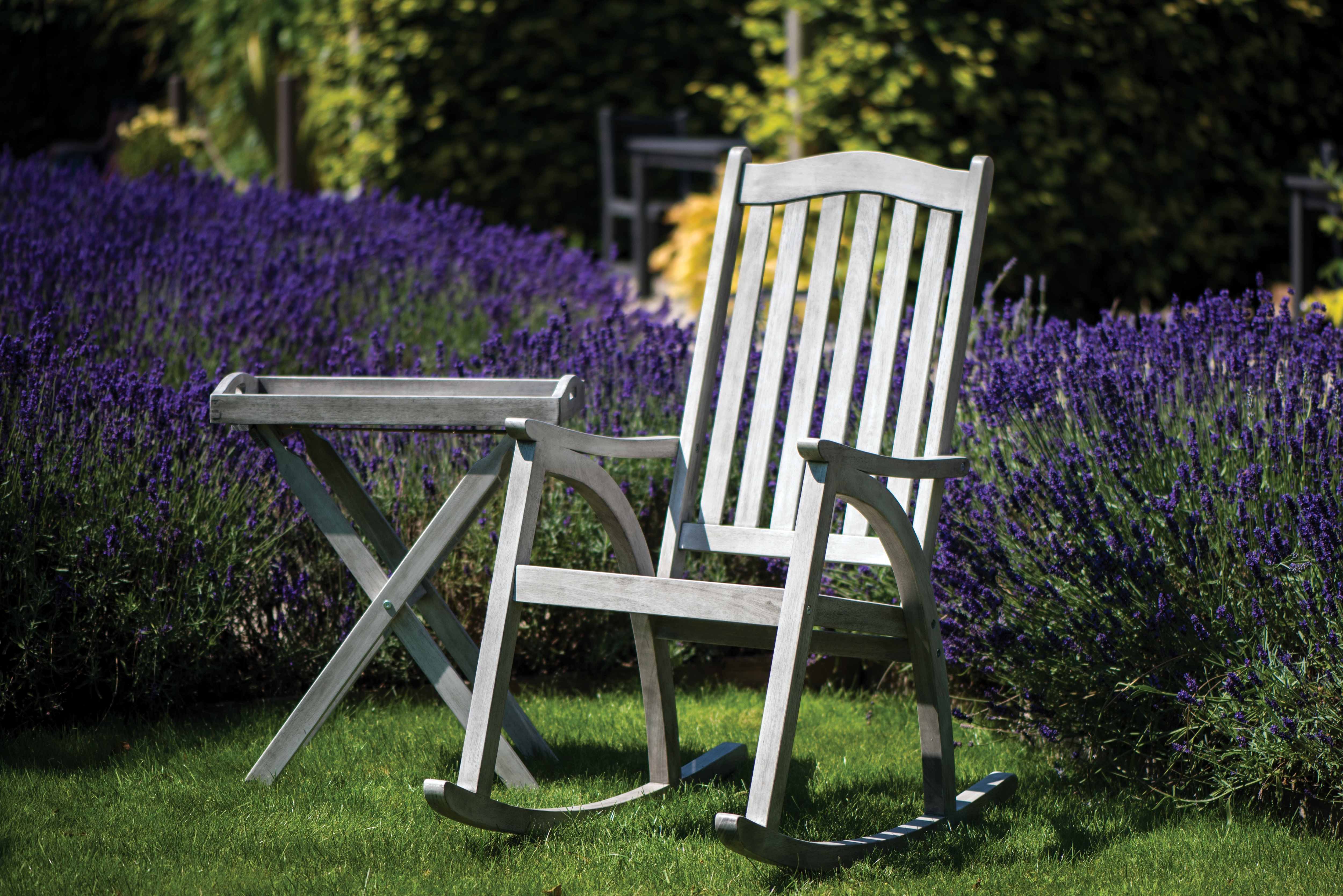
Repton wooden rocking chair. Image supplied by Gardenesque
Outdoor furniture is increasingly similar to indoor with rainproof rattan (made of knitted plastic) sofas rather than traditional wooden benches and table sets. L-shaped and corner sofas are the sofas of choice. Parasols and outdoor awnings are in demand (even if it’s mainly to keep off rain this summer.)
Garden mirrors are now widely available and can add a new dimension, especially in a courtyard or patio. Make sure you have something attractive to reflect. “Mirrors visually extend a space so if feels bigger which can be useful in a small garden. You don’t want too many but as focal points that reflect a particular view,” said Mills. Other sitting room staples, including rugs and side tables, are creeping into the garden.
Garden designer Juliet Sargeant has warned against making gardens the same as interiors or imposing a generic indoor-outdoor look. In an article for The Guardian, she wrote: “ What can, at its simplest, be popping a few seeds into the earth for the pleasure of watching them grow, can also become a complex pattern of fashion, consumption and waste. You could be fooled into thinking you need to spend hundreds of pounds before you can enjoy your garden.”
Don’t forget nature
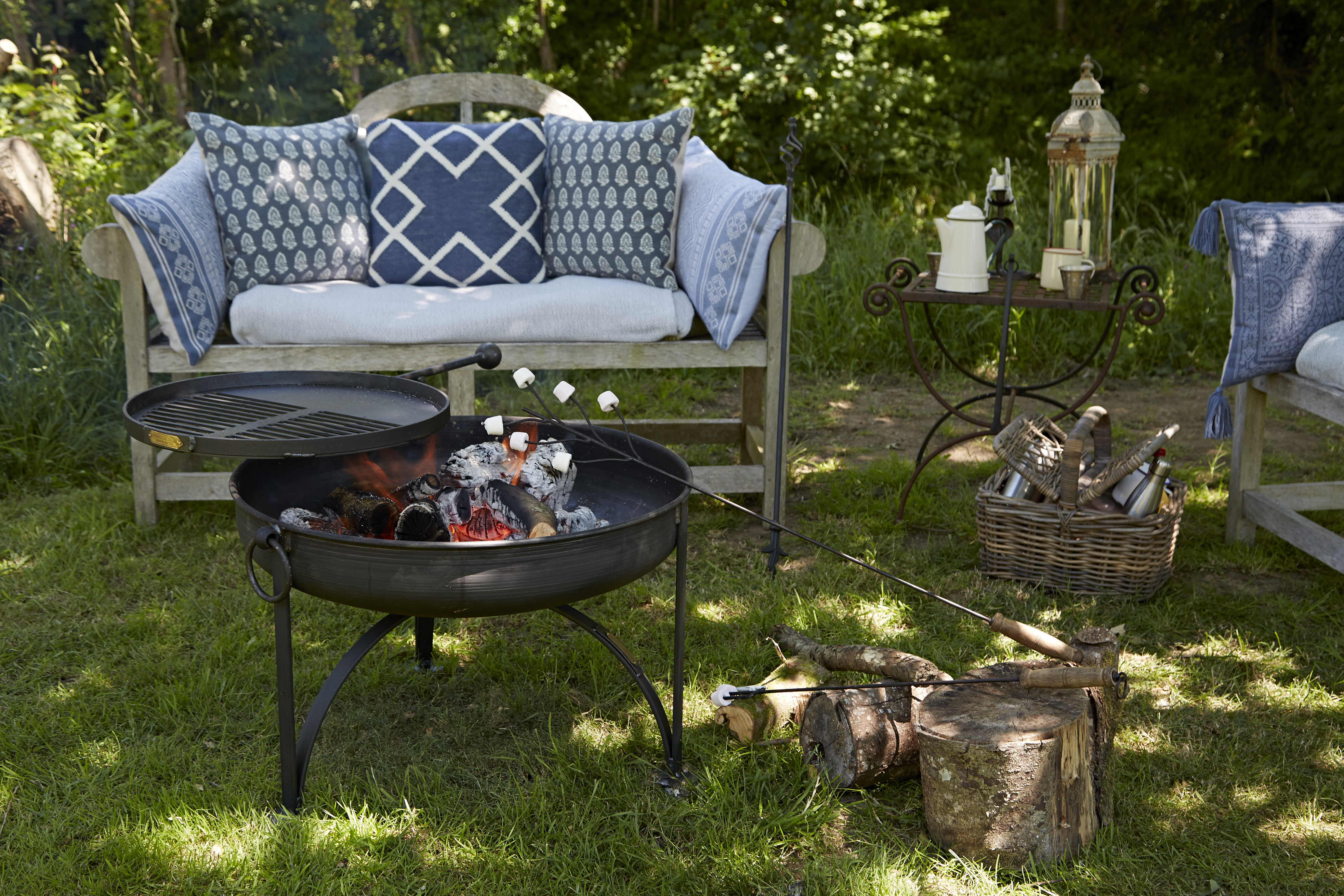 Weaver Green outdoor cushions. Image supplied by Weaver Green
Weaver Green outdoor cushions. Image supplied by Weaver Green
Enhance the indoor-outdoor connection by incorporating natural elements within your interior space. Houseplants, botanical prints and natural materials such as wood and stone can create a sense of harmony. There are also health benefits for people to be surrounded by nature, including reduced stress, so it’s no surprise that biophilic design (link to article) is now big for interior design.
No garden is complete without plants. But Mills said: “Increasing there is less and less demand for plants because of modern lifestyles. People don’t want to spend the time maintaining a garden but be outside enjoying it.” The garden designer said there needs to be a balance between soft and hard landscaping, not only for aesthetic reasons but also for the environment. Plants and real lawns are better for bees, birds and butterflies than patios or paths.
For those who don’t want to spend their time gardening, Mills suggests low maintenance plants, such as Pittosporum ‘Golf ball,’ hebes (bushy evergreen shrub), juniper ‘Green Carpet’ and ornamental grasses. Evergreen shrubs and trees will hold their shape and colour throughout the year, so gardens will look lush and green in winter.”
Curtis said: “Gardens are ever evolving. They never stop. Outdoors is not like an interior space as it changes throughout the seasons and from year to year. It is a living thing. My bread and butter is building patios and paving. But the garden isn’t finished until it’s planted. That is when it really comes alive. Otherwise, it can look boring, like a spare room that’s rarely used.”
With thanks to Luke Mills, director of The Landscape Service and Liam Curtis, owner of Twynham Garden Projects, for their help with this article.
